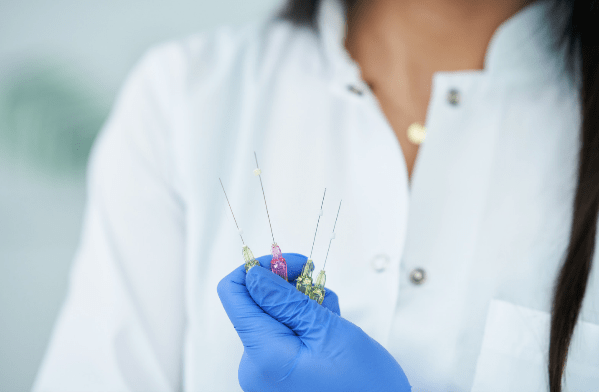
What is PDO Threading?
What is Threading?
PDO Threading is a thread lift (aka: Polydioxanone threading) procedure that uses a dissolvable suture to tighten and lift your skin. The amazing thing is that these threads trigger the (fibroblast) cells in your body to produce more collagen which in turn gives your skin its structure and elasticity to provide an anti-aging effect.
There are three types of threads, PDO (Polydioxanone), PLA (polylactic acid), and PCA (polycaprolactone). PLA and PCA threads are newer types. PDO threads have been around the longest, since the 1980s.
It’s a less invasive procedure than facelift surgery and may be done in less than an hour without the need for a scalpel. The threading uses a biodegradable polyester suture best suited for rejuvenating your skin, although there are some newer types of thread lifts that are better at lifting sagging skin.

They are made from a colorless polyester that breaks down in your body after about 6 months. PLA and PCA threads last longer and tend to stimulate more collagen production. PLA threads take about 12 months to be absorbed and PCA takes about 12 to 15 months. Each type of thread is best suited for a particular benefit. PDO threads are better at repositing and revitalizing tissue while PLA and PCA threads are better at lifting sagging parts of your skin.
Candidate facial areas for threading
A thread lift can treat most parts of your face that are experiencing signs of aging. The areas around your cheeks, jaw, neck, and eyes are among the most commonly treated areas.
Since the results of a threading procedure are not as drastic as the results of facelift surgeries, therefore you may see some benefits of other complimentary anti-aging procedures such as dermal fillers.
What to expect
Once inserted, the threads will tighten the skin and anchor it into place, reducing the amount of visible wrinkles in the skin. The increase in collagen levels also enhances skin volume, which has a plumping effect. After the threads are inserted, the skin begins to repair itself around the threads. This is why the skin remains visibly improved after the threads have been absorbed.
How long does it last?
Generally, results from this procedure are expected to last around three years.
See if PDO Threading is for You
Set Your Expectations
Advantageous though thread lifts are, it’s important for patients to maintain realistic expectations for this procedure.
While thread lifts produce visible changes, they will generally only lift the face by a few millimeters; as such, they create a more subtle and natural looking end result than facelift surgery. Therefore, thread lifts are best suited for patients who are dealing with mild to moderate, rather than severe, signs of skin laxity.
The ideal thread lift candidate is usually in his or her late thirties to early fifties, whereas most patients over the age of about 55 will benefit more profoundly from facelift surgery.
Thread lifts can, however, provide a facelift alternative for older patients who are unable to have surgery for medical reasons.
Because thread lifts can be performed under local anesthesia, many people who have age-related conditions that make them ineligible for surgery (like high blood pressure, type two diabetes and cardiovascular disease) can safely have this treatment.
If you have any outstanding health conditions, make sure to talk to your doctor about whether or not a thread lift might be right for you.

